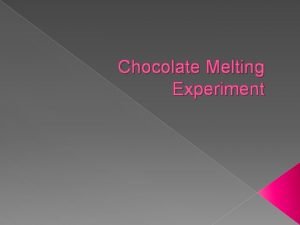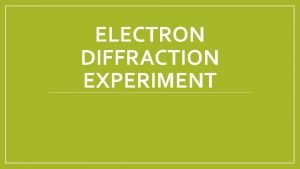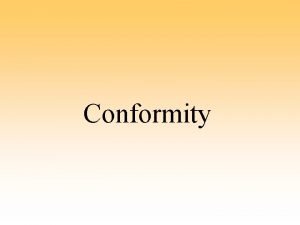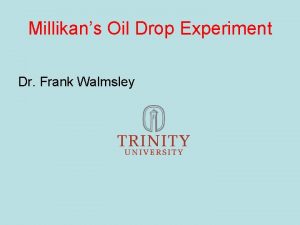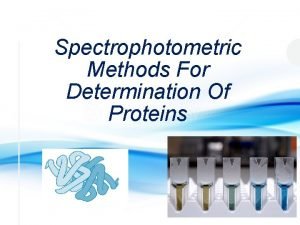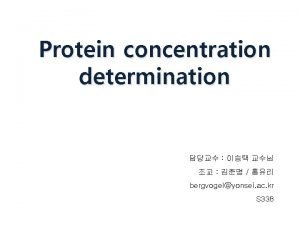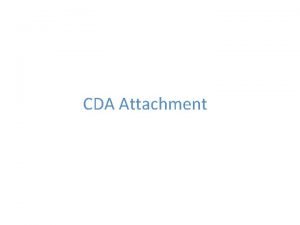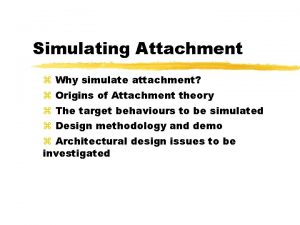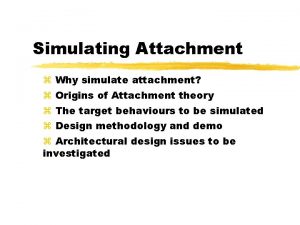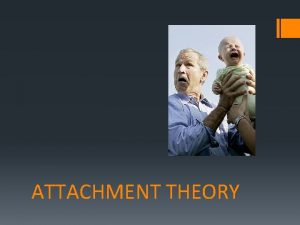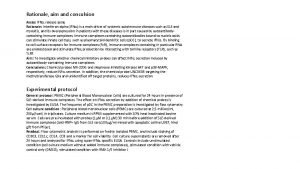MTSLDH Assay results and attachment experiment attempts Numerical







- Slides: 7

MTS/LDH Assay results and attachment experiment attempts (Numerical values of assay results are attached in the spreadsheet)

Fibroblast 3 T 3 cells were cultured and plated in six 96 -well plates. 3 plates were for MTS, and 3 - for LDH assays. These 6 plates were incubated in 37 C overnight to ensure the cells are attached and have settled down. Samples 1, 2, 3, 4 were incubated in media for 24 hours in a shaker based on the proportion of 0. 1 g dry weight of sample per 1 ml of media. Next, the assays were conducted according to the protocol attached. Sample plate. One of the 3 LDH assay plates, after lysis and after reading the absorbance off of it.

MTS Results Viability 180 Viability S 1 S 2 S 3 S 4 Tripton X 100% extract 141. 789941 143. 1236674 66. 72267983 71. 47252378 36. 86520857 160 140 120 100% extract 100 50% extract Viability 50% extract S 1 240. 1549933 S 2 221. 101191 S 3 107. 1993907 S 4 127. 7797594 Tripton X 41. 81511816 80 60 40 20 0 S 1 S 2 Note: If viability is over 80%, then sample is considered non-toxic. S 3 S 4 Tripton X Cells incubated with S 1 and S 2 show viability at 100% and 50% extracts. S 3 and S 4 cells are not viable at 100% extract, however they show viability at 50% extract incubation for S 4. This could be due to carbon taking up all the nutrients from media at 100% extract, but when the extract is diluted to 50% with media, there is enough nutrients in media, and cells incubated with S 4 sample stay viable.

LDH Results Cytotoxicity 120 Cytotoxicity S 1 S 2 S 3 S 4 Triton. X 100% extract 20. 64306663 44. 6447987 70. 11975687 85. 44163145 78. 93130248 100 80 100% extract 60 50% extract Cytotoxicity S 1 S 2 S 3 S 4 Triton. X 50% 22. 5941265 49. 56612521 69. 07730871 63. 52781034 111. 1561703 40 20 0 S 1 S 2 S 3 Note: If cytotoxicity is over 20%, then sample is generally considered cytotoxic. S 4 Triton. X Cells incubated with S 1, although, close to the threshold value, but can be concluded non-toxic. However, cells incubated with other samples seem to show toxicity at 100% and 50% extracts. While reading the absorbance by multiplate reader, the machine couldn’t obtain some of the readings due to high absorbance values. Although, the missing values were replaced with average of other wells’ readings, this could have contributed to the inaccuracies in final results of cytotoxicity.

Attachment/Disattachment experiment 1. Silicone circles were cut in order to fully cover the bottom surface of 12 -well plate. Substrate samples were cut in smaller diameter, in order to fully be emerged in the media. Sample 2 Silicone samples Sample 1, Sample 2 and silicone

2. Silicone circles were placed on the bottom of the well and confirmed to be aligned well. Sample 1, 2, 3, 4 and silicone 3. Samples were placed on top. Sample 2 on top, and silicone circle underneath

4. Samples were placed in the following order from left to right: S 1, S 2, S 3, S 4, bare Silicone, cells 5. 3 T 3 cells with concentration of 2 x 10^6 cells/m. L were introduced into each well. 6. The plate was incubated at 37 C for 4 hours in the first attempt, and for 3 hours in the next. 7. After incubation media was taken from each well. This was supposed to be done to ensure that attachment had occurred. However, even though no cells were found in the media from Samples 1 -4, there were minimal cells found from the well with silicone. At this point it was clear, that the positive control somehow lets the cells penetrate through to the bottom, or attaches cells itself. 8. The plate was incubated in cryogel bath brought to -20 C for 30 minutes. 9. Afterwards, media was collected and cells counted. Cell number obtained from each well was S 1=2*10^4, S 2=10^4, S 3=3*10^4, S 4=5*10^4, S 5=4*10^4. No cells were observed from the negative control well(simple cells). These values are too small to be considerate accurate. Silicone well ideally need to give off total amount of cells that were introduced in the well. The same experiment can be carried out but with the replacement of 12 -well plate by non-sticky plates.
